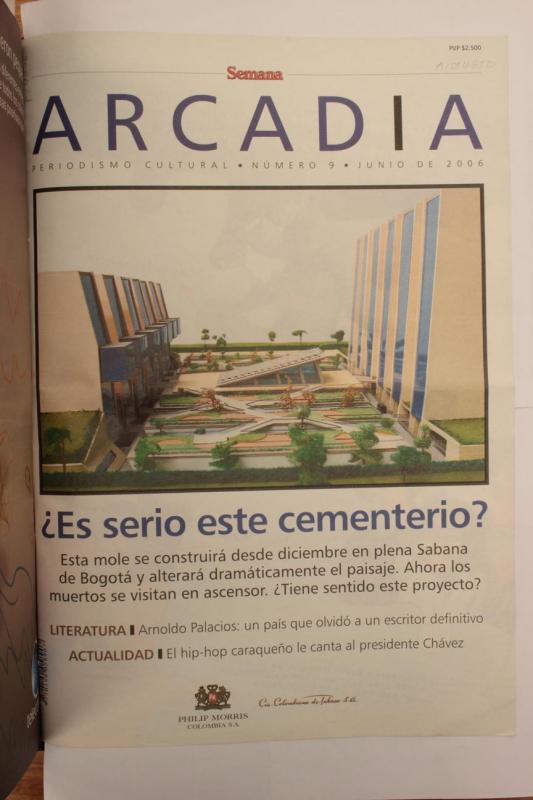This text deliberately voices a criticism of the work Herbario de Plantas Artificiales (2002) by Alberto Baraya (b. 1968) that differs from the commonplace and facile criticism that that work has incited in its many exhibitions since 2002. Ospina points out both the shortcomings and strong points of Baraya’s installation of that work for the fourth Premio Luis Caballero; he deems repetition an important value in the work of this artist and generally in art, asserting that one way to make a discourse hold is to repeat it ad nauseam. Art, unlike advertising, Ospina argues, is not geared to the urgent sale of a product, which means that the lack of innovation may be a conscious effect rather than a defect. For the exhibition Expedición (2006), Baraya showed his entire taxonomical archive of artificial plants along with related documents in an attempt to use a form of staging—which Ospina describes as a “poorly performed trick”—to give a sense of a greenhouse, enclosing the space and the viewers.
Ospina describes Baraya’s work as intelligent owing to the clarity, lightness, and “naturalness” with which it infects daily life as each viewer collects artificial plants in unlikely places indicated in the work. Ospina asserts that this is an active and effective critical mechanism. While he argues that past exhibitions of the work have been well thought out, Ospina is less enthusiastic about the relationship the work establishes with the venue on this occasion. He points out that engaging the space is one of the premises of the Premio Luis Caballero. Ospina also states in a comic tone that although the show features new works, all they do is hint at a new and dubious conceptual concern. The critic speaks specifically of a video that forms part of the installation that on the basis of theoretical repetition, reinforces the visual images and rhetoric of the work. The Premio Luis Caballero is the most important art salon geared to Colombian artists over the age of thirty-five. It is granted by the Instituto Distrital de Cultura y Turismo of Bogotá. Thus far (2009), there have been five editions of the event. For a critical vision of this work written by Humberto Junca, see doc. no. 1100916.
Artist Alberto Baraya has a degree from the fine arts program of the Universidad Nacional of Colombia, and a higher degree from the postgraduate program in aesthetics and art theory of the Universidad Autónoma de Madrid in Spain. He represented Colombia at the twenty-seventh São Paulo Biennial and at the fifty-third Venice Biennale.
In 1995, Lucas Ospina (b. 1971) received a bachelor’s degree in art from the Universidad de los Andes; in 2003, he received a postgraduate degree in sculpture from Temple University in Philadelphia. He was the winner of the fourth Salón de Arte Joven in 1994. A critic and a regular contributor to the Bogotá newspaper, El Tiempo, he currently (2009) teaches at the Universidad de los Andes in Bogotá.

